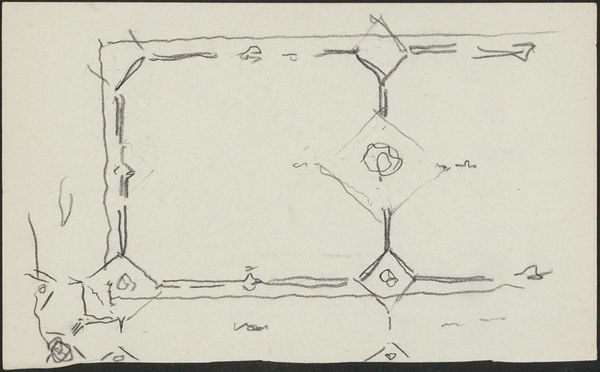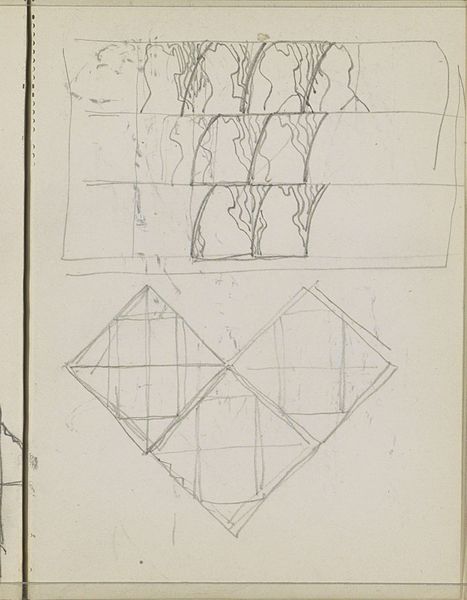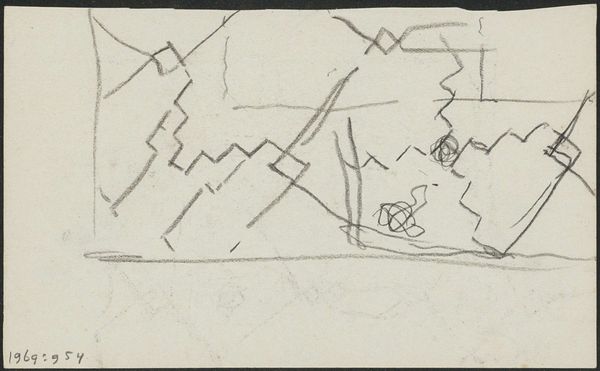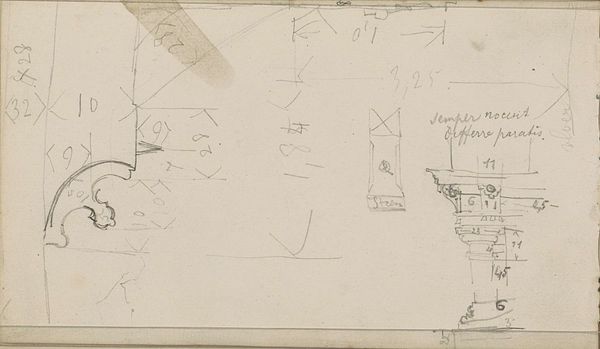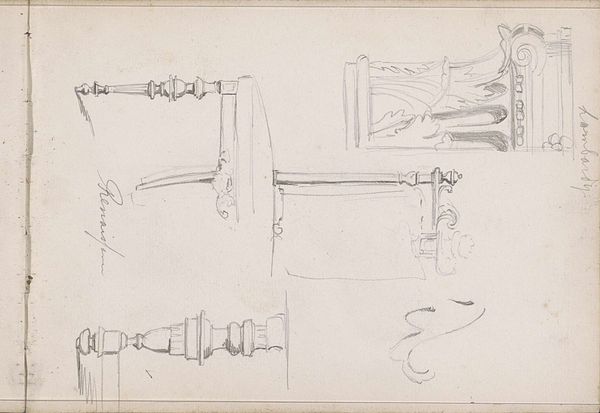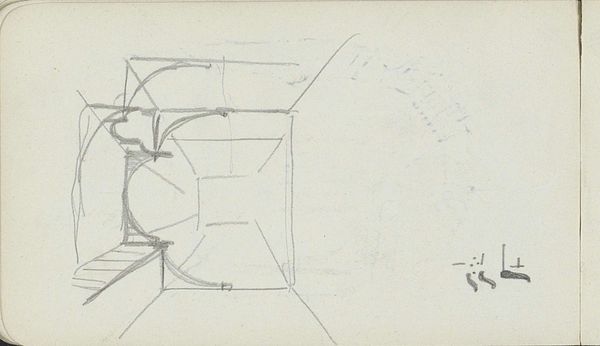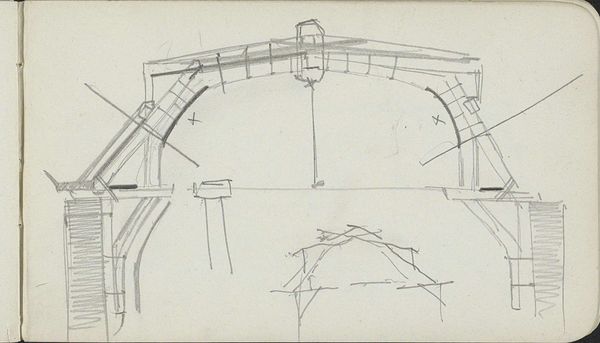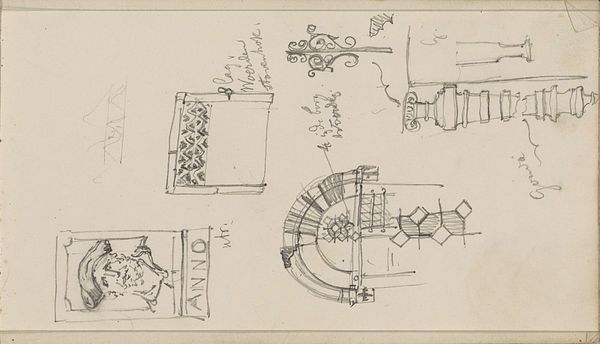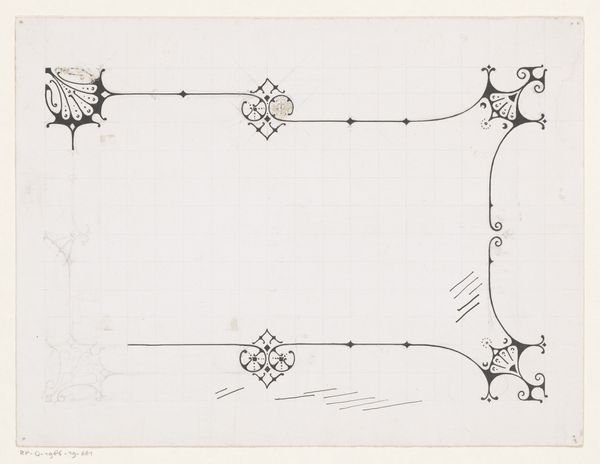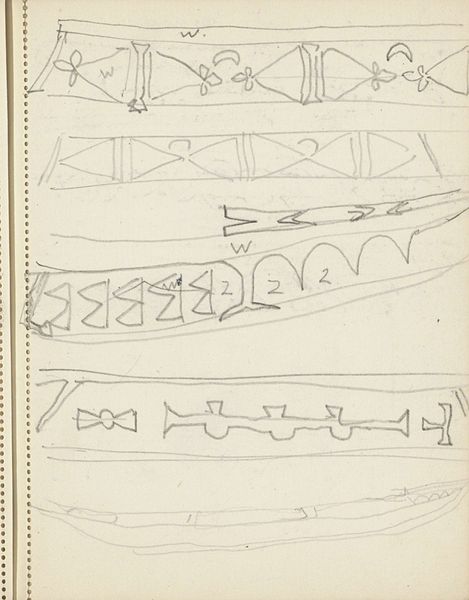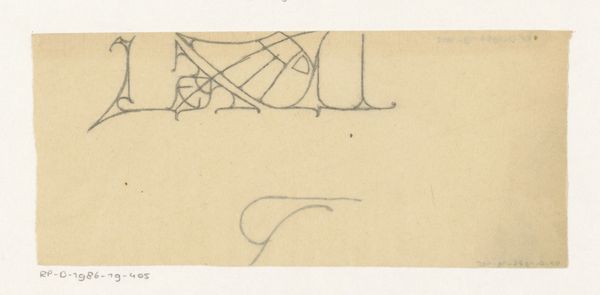
drawing, ornament, pencil
#
drawing
#
ornament
#
art-nouveau
#
form
#
pencil
#
abstraction
#
line
Dimensions: height 99 mm, width 164 mm
Copyright: Rijks Museum: Open Domain
Editor: Here we have Gerrit Willem Dijsselhof’s “Florale Ornamenten,” dating from sometime between 1876 and 1924. It's a pencil drawing. The drawing has a very skeletal, unfinished feel. It looks like the bones of a more elaborate design. What do you see in this piece? Curator: It strikes me as a fascinating study in the economy of line. Notice how Dijsselhof uses minimal strokes to suggest form and texture. The drawing embodies a fascinating tension between representation and abstraction, particularly within the Art Nouveau idiom. Consider, too, how the repetition of geometric and organic motifs creates a rhythmic visual pattern. What, to you, is the role of negative space in the overall composition? Editor: I hadn’t considered the negative space before, but now I see how it gives the ornamentation room to breathe. Without it, the drawing could feel heavy, almost oppressive. Curator: Precisely. Furthermore, observe how the interplay between line weight and density contributes to the visual hierarchy. Thicker, more deliberate lines draw the eye to key focal points, such as the central floral element. This use of emphasis directs the viewer's gaze and creates a sense of visual depth. The question arises, does the lack of completion detract or contribute to the overall artistic impact? Editor: I initially thought the lack of completion was a flaw, but now I think it allows us to focus on Dijsselhof's design process, and appreciate the bare essentials. It's a little like looking behind the scenes of a grand production. Curator: Indeed. The seeming incompleteness lays bare the underlying structure, the essential armature upon which the full ornamentation would rest. Ultimately, the work reveals a potent meditation on form and the poetics of the unfinished. Editor: I'll never look at pencil drawings the same way again. This has broadened my appreciation of details and abstraction in art. Curator: It is these kinds of aesthetic examinations which ultimately enrich our viewing experiences, giving us more insight.
Comments
No comments
Be the first to comment and join the conversation on the ultimate creative platform.
